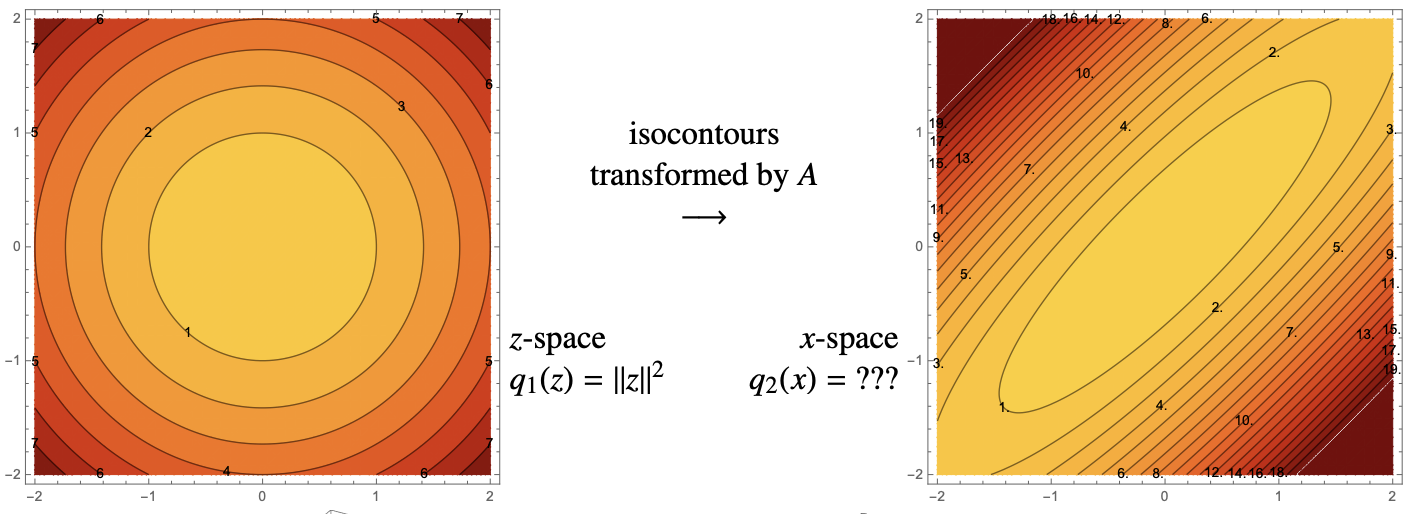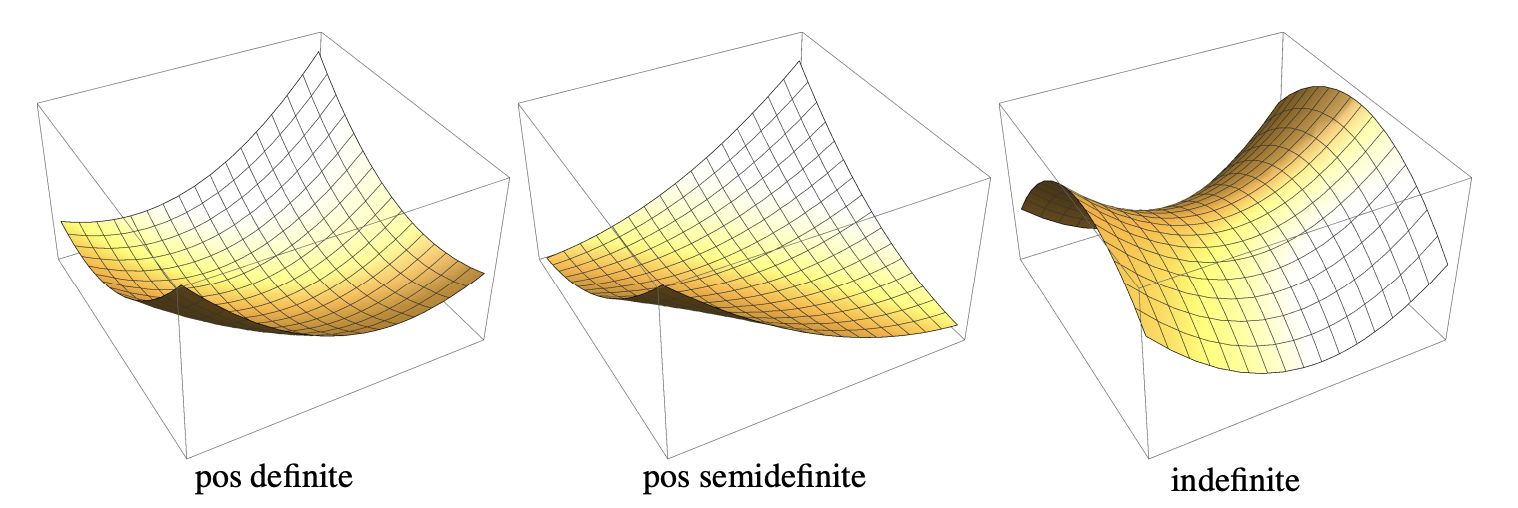- The quadratic form of M (M is symmetric) is
A symmetric matrix M
- is positive definite if for all w 0 all eigenvalues are positive.
- A symmetric matrix M is positive semi-definite if for all w 0 all eigenvalues are non-negative. (Not invertible if eigenvalue 0)
- Indefinite: Saddle → if positive eigenvalues and negative eigenvalues.
- Invertible if there is no 0 eigenvalue.
Transformation by the matrix in quadratic form

Goal: Want the matrix such that it transforms the left graph to the right graph.
Thus,
Now that we have this equation, , we can plot iso-contours of
Isocontours of a Quadratic Form
Given a symmetric PSD and , then the isocontours of are
- The axes of the ellipsoid are given by the eigenvectors of M
- The radii are determined by the square roots of the eigenvalues of . This is the same as radii = because
- For Identity Matrix, isocontours are simply spheres.
- For Diagonal Matrix, isocontours are axis-aligned (same as coordinate axes).
- For General PSD, the isocontours are ellipses / ellipsoids.
In the case of , radii of ellipsoid = . The pattern here is therefore:
(multiply the exponent with ) for eigenvalues (radii of ellipsoids)
{TODO: Discussion 5}
Recap on Symmetric Matrix and relate to the Quadratic form plot.
A symmetric matrix M
- positive definite \iff$$w^TMw > 0 for all .
- positive semi-definite for all .
- indefinite have both +ve and -ve eigenvalues.
- invertible no 0 eigenvalue.

{TODO: }
Every square matrix has to be Positive Semidefinite, including . If exists, it is Positive Definite.
Isotropic = Variance is the same in all directions.